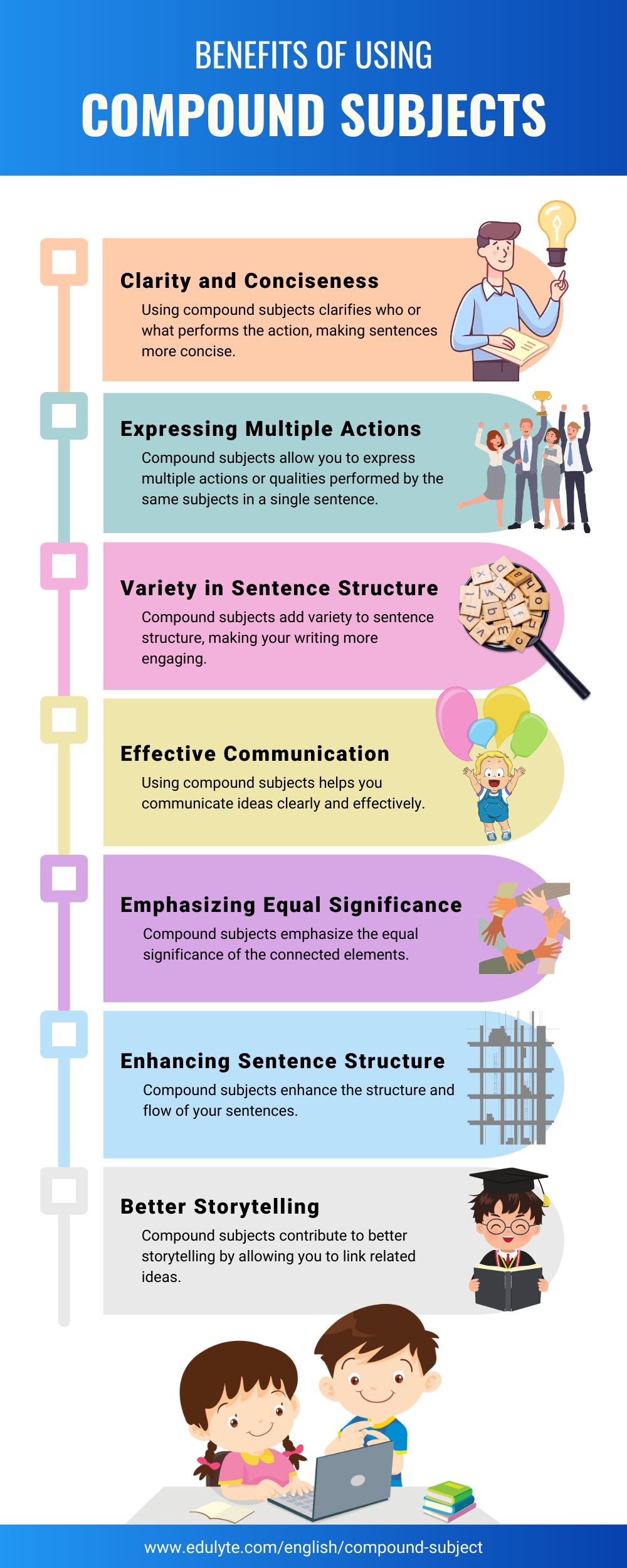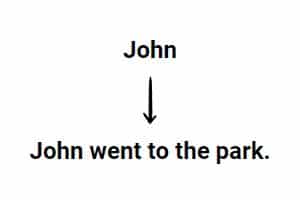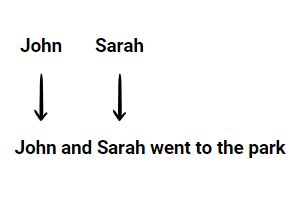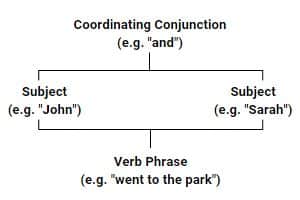
Learn English
Compound Subject
Phonetics:
kɒmpaʊnd
sʌbdʒɪkt
Pronunciation:
The Ultimate Guide to Compound Subjects in English Grammar
Comprehensive Definition, Description, Examples & Rules
Introduction
What is a compound subject? A compound subject is when two or more subjects are joined by a coordinating conjunction. The verb in the sentence must agree with each subject. For example, in “John and Mary are going,” “John” and “Mary” form the compound subject, and the verb “are” agrees with both. Compound subjects allow us to express multiple individuals or things in a single sentence.
Understanding compound subjects in sentences is crucial for effective communication. A compound subject occurs when two or more subjects share the same verb in a sentence. By grasping this concept, students can enhance their writing and comprehension skills. Recognizing compound subjects allows us to identify who or what is performing the action in a sentence, aiding in clarity and precision. Moreover, it helps us avoid potential errors such as subject-verb agreement mistakes. Whether we’re writing an essay, participating in class discussions, or simply reading a book, comprehending compound subjects enables us to construct well-structured sentences and convey our thoughts accurately.
Types of compound subjects
Coordinating Conjunctions
Coordinating conjunctions in English grammar serves the purpose of connecting words, phrases, or clauses that hold equal significance. They are used to connect similar or related ideas, coordinating them within a sentence. Common coordinating conjunctions include “and,” “but,” “or,” “so,” and “yet.” “And” is used to combine elements or add information, “but” introduces a contrasting element or idea, “or” presents alternatives, “so” indicates a cause-and-effect relationship, and “yet” introduces a contradiction. These conjunctions help create cohesive and logical connections in writing, enabling effective communication.
Coordinating conjunctions are important connectors in English grammar. When used to link two or more simple subjects, they create a compound subject. A compound subject consists of multiple subjects joined together by words like “and,” “but,” or “or.” For example, in the sentence “Harry and Louis bake a cake together,” the coordinating conjunction “and” connects the two subjects, Harry and Louis, to form the compound subject. This compound subject emphasizes that both individuals engage in the action of baking a cake. Similarly, coordinating conjunctions enable us to express contrasting or alternative subjects. By using coordinating conjunctions, we can combine simple subjects and create a more dynamic and flexible sentence structure.
Here are some examples of sentences that demonstrate compound subjects formed using coordinating conjunctions:
- Jack and Jill went up the hill to fetch a pail of water.
- Lisa and John presented their projects.
- The lion roared fiercely, and the tiger growled in response.
Correlative Conjunctions
Correlative conjunctions in English grammar are pairs of words that work together to join two equal grammatical elements. They are used to show a relationship of balance or contrast between these elements. Common correlative conjunctions include “both…and,” “either…or,” “neither…nor,” “not only…but also,” and “whether…or.” For example, “Both my brother and I enjoy playing soccer.” In this sentence, “both” and “and” are correlative conjunctions that connect two equal subjects, emphasizing their shared interest. Correlative conjunctions help to create clear and structured sentences by linking related ideas in a balanced and cohesive manner.
Correlative conjunctions connect simple subjects to create a compound subject. They come in pairs like “either…or,” “neither…nor,” and “both…and.” These conjunctions show a relationship between the subjects and treat them as a single unit in the sentence. This emphasizes the equal importance of both subjects and enhances sentence clarity and structure.
Compound subjects are used to talk about multiple people or things in a sentence. They can be formed by using special pairs of words called correlative conjunctions. For example, we use “either…or” when we want to say that one thing or another thing is true. For instance, “Either Tom or Jerry will attend the party.” We use “neither…nor” to say that neither of the two things is true. For instance, “Neither the cat nor the dog likes vegetables.” Finally, we use “both…and” to say that two things are true at the same time. For instance, “Both the cat and the dog are sleeping.” These correlative conjunctions help us express ideas about multiple subjects in a clear and concise way.
Compound Subjects with Appositives
Appositives in English grammar are noun phrases that provide additional information or clarify the identity of another noun or pronoun in a sentence. They are typically set off by commas. Appositives serve to expand upon or explain the noun they are in apposition to, adding detail and context.
In the given sentence, “My sister, a proficient artist, skillfully painted a captivating mural,” the phrase “a proficient artist” functions as an appositive, imparting supplementary information regarding the subject “my sister.” Appositives serve to enhance sentence structure, accentuate vital aspects, and enrich the language by providing precise and captivating details.
Appositives constitute a pivotal component of sentence structure, imparting clarity and versatility to written expression. Functioning as a noun or noun phrase, an appositive serves the purpose of renaming or identifying another noun or pronoun. When multiple appositives are combined, they form a compound subject with two or more nouns working as the sentence’s subject. This technique allows writers to merge related ideas and provide extra information concisely and engagingly. By using appositives to build compound subjects, writers elevate the quality and impact of their sentences.
Here are a few examples of sentences that demonstrate the use of appositives to create compound subjects:
- John, the class president, and Sarah, the star athlete, organized the school event.
- The tree, a towering oak, and the flower, a delicate rose, stood side by side in the garden.
- My parents, my role models, and my siblings, my best friends, always support me.
Compound Subjects with Participles
Participles in English grammar are verb forms that can function as adjectives or parts of verb phrases. There are two types of participles: present participles and past participles. Present participles end in “-ing” and are used to describe ongoing actions or as adjectives. For example, in the sentence “The running water is refreshing,” “running” is a present participle describing the water. Past participles, on the other hand, often end in “-ed,” “-en,” or irregularly, and are used to form verb tenses and passive constructions. For example, in the sentence “She has baked a cake,” “baked” is a past participle indicating the completed action. Participles are versatile elements in English grammar that add depth and detail to sentences.
Participles, which are verb forms that function as adjectives, can be used to create compound subjects in sentences. When two or more participles modify different nouns, they can combine to form a compound subject. For example, in the sentence “The laughing children and barking dogs filled the park with joy,” the participles “laughing” and “barking” modify the nouns “children” and “dogs” respectively, creating a compound subject. This technique adds variety and detail to sentence structure, making writing more engaging and descriptive. By using participles in this way, writers can effectively convey multiple actions or qualities performed by different subjects in a concise and impactful manner.
Here are a few examples of sentences with compound subjects formed using participles:
- The running athlete and jumping gymnast impressed the crowd with their skills.
- The singing birds and dancing butterflies added beauty to the garden.
- The roaring thunder and flashing lightning terrified the villagers.
- The crying baby and barking dog disrupted the peaceful atmosphere.
- The smiling students and applauding parents celebrated the school’s achievement.
Compound Subjects with Infinitives
Infinitives are a fundamental concept in English grammar. They are the base form of a verb preceded by the word “to,” such as “to run” or “to eat.” Infinitives can function as nouns, adjectives, or adverbs in a sentence. As nouns, they can serve as the subject or object of a sentence, like “To study is important” or “I want to learn.” As adjectives, they modify nouns, as in “She has books to read.” And as adverbs, they provide additional information about the verb, like “He works hard to succeed.” Infinitives play a crucial role in expressing purpose, intention, or desire in English sentences.
Infinitives can be used to create compound subjects, which add complexity and variety to sentence structures. An infinitive is the base form of a verb preceded by the word “to,” like “to swim” or “to study.” When two or more infinitives are combined, they form a compound subject. For example, “To swim and to run” or “To sing, to dance, and to act” are compound subjects. This construction allows us to express multiple actions or activities performed by the same subject.
Compound subjects with infinitives enhance the richness and diversity of our writing and speaking. Here are some examples of sentences with compound subjects formed using infinitives:
- To read and to write are essential skills for effective communication.
- To eat healthy and to exercise regularly are important for maintaining a balanced lifestyle.
- To study diligently and to ask questions are key strategies for academic success.
- To laugh, to love, and to live fully are the secrets to a happy life.
Common Errors to Avoid
Compound subjects are formed when two or more subjects share the same verb. It is essential to understand how to correctly use the coordinating conjunction ‘nor’ when combining subjects in sentences with nor, especially when constructing compound subjects. One common error to avoid is subject-verb disagreement. Ensure that the verb matches the subject closest to it, regardless of the subject that follows “nor.” Another common mistake is using “nor” when “or” is more appropriate. “Nor” is used to negate a negative statement that includes a preceding “neither.” Lastly, be cautious of double negatives. Avoid using “nor” in sentences with negative words like “not,” “never,” or “no one,” as this creates confusion and renders the sentence grammatically incorrect.
To ensure clear and accurate writing, it’s important to avoid common errors when using compound subjects and “nor” in sentences. Here are some helpful tips to keep in mind:
Subject-verb agreement:
- Ensure the verb agrees with the subject closest to it, regardless of the subject that follows “nor.”
- Example: “Neither Tom nor his friends were attending the party.”
Proper use of “nor”:
- Use “nor” to negate a negative statement that includes a preceding “neither.”
- Example: “Neither the cat nor the dog wants to go outside.”
Differentiate between “nor” and “or”:
- Use “nor” when both alternatives are negative.
- Use “or” when one or both alternatives are positive.
- Example: “He doesn’t like apples or oranges, nor does he like bananas.”
Avoid double negatives:
- Steer clear of using “nor” in conjunction with negative words like “not,” “never,” or “no one.”
- Example: “She didn’t want to eat nor drink anything.”
Proofread and revise:
- Carefully review your sentences to ensure they are clear, grammatically correct, and effectively convey your intended meaning.
Seek feedback from peers or teachers to catch any errors you might have missed.
Compound Subjects vs. Simple Subjects
Compound subjects and simple subjects are two different types of subjects in a sentence. The subject of a sentence denotes the noun or pronoun to which the sentence pertains. A simple subject refers to a single person, thing, or idea, while a compound subject consists of two or more subjects joined together by a coordinating conjunction like “and” or “or.” For example, “The cat” is a simple subject, while “The cat and the dog” is a compound subject. Understanding the difference between compound and simple subjects is important for constructing clear and grammatically correct sentences.
Here are examples of sentences that demonstrate both compound subjects and simple subjects:
Simple Subject:
- The dog barks at the mailman.
- Soccer is her favourite sport.
- The book captivated the readers.
Compound Subject:
- John and Mary went to the park.
- The sun and the moon rise every day.
- Apples, oranges, and bananas are delicious fruits.
In the first set of examples, the simple subject is a single noun or pronoun (e.g., “dog,” “soccer,” “book”). In the second set, the compound subject consists of two or more subjects joined by a coordinating conjunction (e.g., “John and Mary,” “the sun and the moon,” “apples, oranges, and bananas”).
A simple subject refers to a sentence with only one subject noun or pronoun. Let’s take the sentence “John went to the park” as an example. The visual representation would be as follows:
In this diagram, “John” is the simple subject, and the arrow indicates that “John” is the one performing the action of going to the park.
On the other hand, a compound subject consists of two or more subjects sharing the same verb. Let’s consider the sentence “John and Sarah went to the park” this time. The visual representation would look like this:
In this diagram, both “John” and “Sarah” are the compound subjects, connected by the coordinating conjunction “and.” The arrows indicate that both “John” and “Sarah” are performing the action of going to the park.
Commonly Used Coordinating Conjunctions for Compound Subjects
Coordinating conjunctions are essential for combining compound subjects and creating clear and coherent sentences. Here are how one can use them:
- And: This conjunction is used to connect two or more subjects that share a similar idea, concept, or action. It indicates a continuation or addition of information.
- But: When used between compound subjects, “but” introduces a contrasting or opposing element. It signifies a conflict, contradiction, or exception between the subjects.
- Or: This conjunction presents a choice or alternative between two or more subjects. It indicates that only one of the subjects can be selected or that different options are available.
- Nor: Similar to “or,” “nor” also presents a choice or alternative. However, it is used in negative constructions to indicate that neither of the subjects is applicable or true.
- For: “For” is used to explain the reason or purpose behind the compound subjects. It provides an explanation or justification for the subjects being connected.
Here are examples of sentences that demonstrate the use of each coordinating conjunction with a compound subject:
And:
- Sarah and John went to the park to play.
- The cat and the dog are sleeping on the couch.
But:
- The sun is shining brightly, but the wind is blowing fiercely.
- She loves to dance, but he prefers to sing.
Or:
- Would you like tea or coffee?
- You can choose to study French or German.
Nor:
- She neither likes chocolate nor ice cream.
- He can neither swim nor ride a bike.
For:
- They studied hard, for the exam was challenging.
- She prepared diligently, for the competition was fierce.
Yet:
- The weather was sunny, yet they carried umbrellas.
- He was tired, yet he continued to work.
So:
- The rain was pouring heavily, so they decided to stay indoors.
- She practised diligently, so she excelled in her performance.
Neither…nor:
- Neither the cat nor the dog wanted to go outside.
- Neither Sarah nor John could solve the math problem.
In this representation, the coordinating conjunction is located in the middle, connecting two subjects on either side. Each subject represents a person or thing that performs the action or is described in the sentence. The verb phrase shows the action or state being performed by the subjects. For example, let’s consider the sentence: “John and Sarah went to the park.” In the visual representation, the subject “John” is connected to the verb phrase “went to the park” by an arrow, indicating that John performed the action. Similarly, the subject “Sarah” is also connected to the same verb phrase, showing that Sarah also performed the action.

Transform Your English Skills
Free sign-up for a personalised dashboard, learning tools, and unlimited possibilities!
Sign up Now
Key Takeaways
- Compound subjects consist of two or more subjects in a sentence.
- Coordinating conjunctions, such as “and,” “but,” or “or,” are used to connect the subjects in a compound subject.
- “Neither…nor” is a correlative conjunction used to create a compound subject, indicating that neither of the subjects is true.
- Compound subjects can have more than two parts, with each part connected by coordinating conjunctions.
- Sentences with compound subjects are punctuated with a comma before the coordinating conjunction that joins the subjects.
Quiz
Question comes here
Frequently Asked Questions
To use “neither…nor” as a correlative conjunction to create a compound subject, you connect two or more subjects using “neither” before the first subject and “nor” before the subsequent subjects. For example, “Neither Tom nor Mary likes broccoli.”
To use “or” as a coordinating conjunction to create a compound subject, you connect two or more subjects using “or” between them. For example, “Tom or Mary will bring the snacks.”
Yes, a compound subject can have more than two parts. It can consist of two or more subjects connected by coordinating conjunctions. For example, “Tom, Mary, and John are going to the party.”
A sentence with a compound subject is punctuated with a comma before the coordinating conjunction that joins the subjects. For example, “Tom, Mary, and John went to the movies.”





